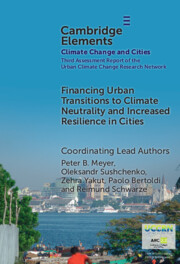Refine listing
Actions for selected content:
1296014 results in Books
11 - Sicily
- from Part III - Geographical Reach
-
-
- Book:
- The Cambridge Companion to the Spanish Inquisition
- Published online:
- 04 December 2025
- Print publication:
- 18 December 2025, pp 257-277
-
- Chapter
- Export citation
Conclusion: Christopher Columbus in Chios
-
- Book:
- The Desire for Syria in Medieval England
- Published online:
- 01 December 2025
- Print publication:
- 18 December 2025, pp 192-197
-
- Chapter
- Export citation
Contributors
-
- Book:
- Data-Intensive Investigations of English
- Published online:
- 03 December 2025
- Print publication:
- 18 December 2025, pp xiii-xiii
-
- Chapter
- Export citation
1 - What Is the State of Nature?
- from Part I - Making Sense of the State of Nature
-
- Book:
- The State of Nature and the Shaping of Modernity
- Published online:
- 19 November 2025
- Print publication:
- 18 December 2025, pp 27-74
-
- Chapter
- Export citation
Contents
-
- Book:
- Theatre and Censorship in France from Revolution to Restoration
- Published online:
- 30 November 2025
- Print publication:
- 18 December 2025, pp vii-vii
-
- Chapter
- Export citation
Bibliography
-
- Book:
- Huguenot Networks
- Published online:
- 28 November 2025
- Print publication:
- 18 December 2025, pp 228-243
-
- Chapter
- Export citation
Chapter 1 - The Bureaucratic Censorship Process
- from Part I - Bureaucratic and Lateral Censorship
-
- Book:
- Theatre and Censorship in France from Revolution to Restoration
- Published online:
- 30 November 2025
- Print publication:
- 18 December 2025, pp 27-67
-
- Chapter
- Export citation

Financing Urban Transitions to Climate Neutrality and Increased Resilience in Cities
- Coming soon
-
- Expected online publication date:
- December 2025
- Print publication:
- 31 January 2026
-
- Element
- Export citation
2 - Locking-In a Constitution, Locking-Out ‘the People’
-
- Book:
- In the Shadow of the Constitution
- Published online:
- 25 November 2025
- Print publication:
- 18 December 2025, pp 38-74
-
- Chapter
- Export citation
Contents
-
- Book:
- Proof Theory and Logic Programming
- Published online:
- 01 December 2025
- Print publication:
- 18 December 2025, pp vii-x
-
- Chapter
- Export citation

The Post-Managerial Era of Capitalism
- Organizational Design as the Next Innovation Frontier
- Coming soon
-
- Expected online publication date:
- December 2025
- Print publication:
- 31 January 2026
-
- Element
- Export citation
8 - The Impact of US Sanctions on Cuba’s Economic Development
- from Part I - Humanitarian Consequences
-
-
- Book:
- Economic Sanctions from Havana to Baghdad
- Published online:
- 28 November 2025
- Print publication:
- 18 December 2025, pp 153-168
-
- Chapter
-
- You have access
- Open access
- HTML
- Export citation
Acknowledgements
-
- Book:
- Theatre and Censorship in France from Revolution to Restoration
- Published online:
- 30 November 2025
- Print publication:
- 18 December 2025, pp viii-x
-
- Chapter
- Export citation

Reliabilism and its Rivals
- Coming soon
-
- Expected online publication date:
- December 2025
- Print publication:
- 31 January 2026
-
- Element
- Export citation
Chapter 1 - Veiling in the Ancient Mediterranean
-
- Book:
- Veiling in the Late Antique World
- Published online:
- 26 November 2025
- Print publication:
- 18 December 2025, pp 19-69
-
- Chapter
- Export citation
Chapter 1 - The Cheese and the Word(s)
-
- Book:
- Huguenot Networks
- Published online:
- 28 November 2025
- Print publication:
- 18 December 2025, pp 19-46
-
- Chapter
- Export citation
5 - Two Abstract Logic Programming Languages
-
- Book:
- Proof Theory and Logic Programming
- Published online:
- 01 December 2025
- Print publication:
- 18 December 2025, pp 61-106
-
- Chapter
- Export citation
Dedication
-
- Book:
- The State of Nature and the Shaping of Modernity
- Published online:
- 19 November 2025
- Print publication:
- 18 December 2025, pp v-vi
-
- Chapter
- Export citation
Chapter 4 - Intellectual Property and the Prisoner’s Dilemma
-
- Book:
- Intellectual Property
- Published online:
- 20 November 2025
- Print publication:
- 18 December 2025, pp 103-131
-
- Chapter
- Export citation
9 - Does the President Have the Power to Void Birthright Citizenship?
- from Part I - Presidential Power
-
- Book:
- The U.S. Presidency
- Published online:
- 30 November 2025
- Print publication:
- 18 December 2025, pp 165-166
-
- Chapter
- Export citation
